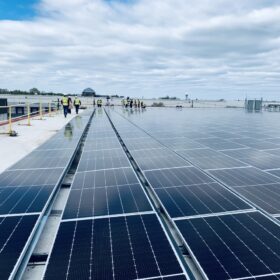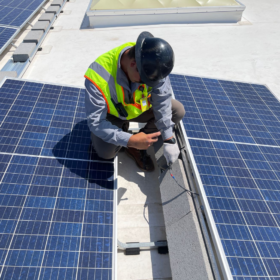Sunrise brief: New York policy authorizes $814.6 million to fund energy storage
Also on the rise: A look at the prevailing wage and apprenticeship final rule. Spontaneous glass breakage on solar panels on the rise. And more.
Weather-related damage to solar assets exceed modeling expectations by 300%
The report from kWh Analytics, with input from several industry leaders, identified 14 risks to be aware of in the solar industry, including risks related to extreme weather, such as hail, and operational risks.
Mitigate lithium-ion battery fire risk for manageable premiums
As debate continues to rage about the best ways to deal with battery fires, a risk management professional and an insurance underwriter discuss some golden rules for project developers.
Over half of solar facility loss claim costs are due to hail damage
GCube Insurance said despite representing less than 2% of total claims filed, hail damage represents over 50% of total costs incurred.
Insurer to cover up to $20 million in damage limits for solar projects
Retail clients can access quote and bind to insure U.S. C&I solar projects with limits on replacement cost of $2 million to $20 million per project site location, according to NARDAC Insurance Services.
Top risks for solar assets: Operational risk
From $2.5 billion in losses from equipment underperformance, to clipping losses, to inverter derating and more, this third installment based on kWh Analytics reporting focuses on asset operation.
Climate change and solar project flood risk
A well-balanced project design is one that maximizes use of the buildable space for a parcel of land while avoiding costly impacts from flood damage during the operational period.
Ten most common rooftop solar safety risks
Clean Energy Associates found a myriad of problems at solar installations around the world, noting that because most are caused by poor installation practices, many can be identified and resolved relatively easily before they lead to fires, safety risks and potentially costly liabilities.
Top risks for solar assets: Extreme weather
The first of a three-part series on solar asset risks. Next, we will review kWh Analytics risk evaluation for financial modeling and asset operations.
Software provider introduces hail detection solution for solar projects
Hail events have historically posed a considerable risk for utility solar projects, with weather instances creating up to $100 million in damages at large projects located in “Hail Alley” states such as Texas.














